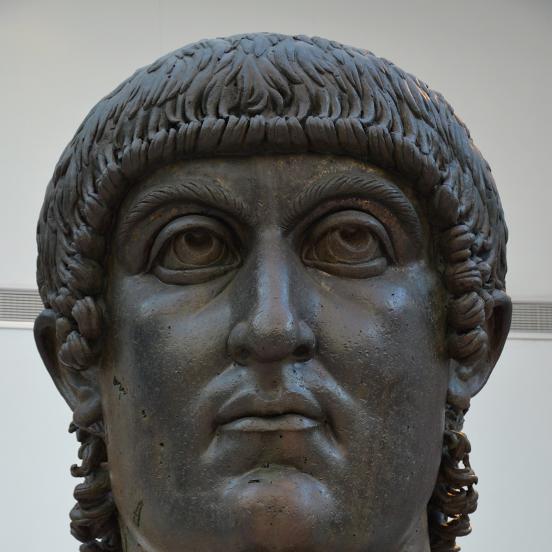Colossal bronze statue of Constantine I
Only the head and the left hand of the emperor’s colossal bronze statue exist. In the Middle Ages each was placed on a pillar in front of the Lateran Palace in Rome. At the time a gold diadem decorated with gems was still on the head and the hand was holding a globe symbolizing the emperor’s world power. A dowel hole can still be seen on the top of the globe, into which the statue of Victoria, the goddess of victory, was fastened. The head of the statue was identified as Constantius II (337-361) for a long time, but today judging by its characteristic profile and hairstyle it is generally accepted that it depicts Constantine I. The presumed site where the statue was found also lends itself to this concept. Constantine I had the complex of the Lateran Basilica and Palace built and after it was finished he donated it to the bishop of Rome. The colossal equestrian or enthroned statue, to which the two fragments must have belonged, probably stood in this building complex. In 1471 both bronze fragments were acquired as a gift from Pope Sixtus IV by the collection of the Palazzo dei Conservatori on Capitoline Hill in Rome. At present they can be seen in the Capitoline Museum in the same room where the famous equestrian statue of Marcus Aurelius is exhibited.

